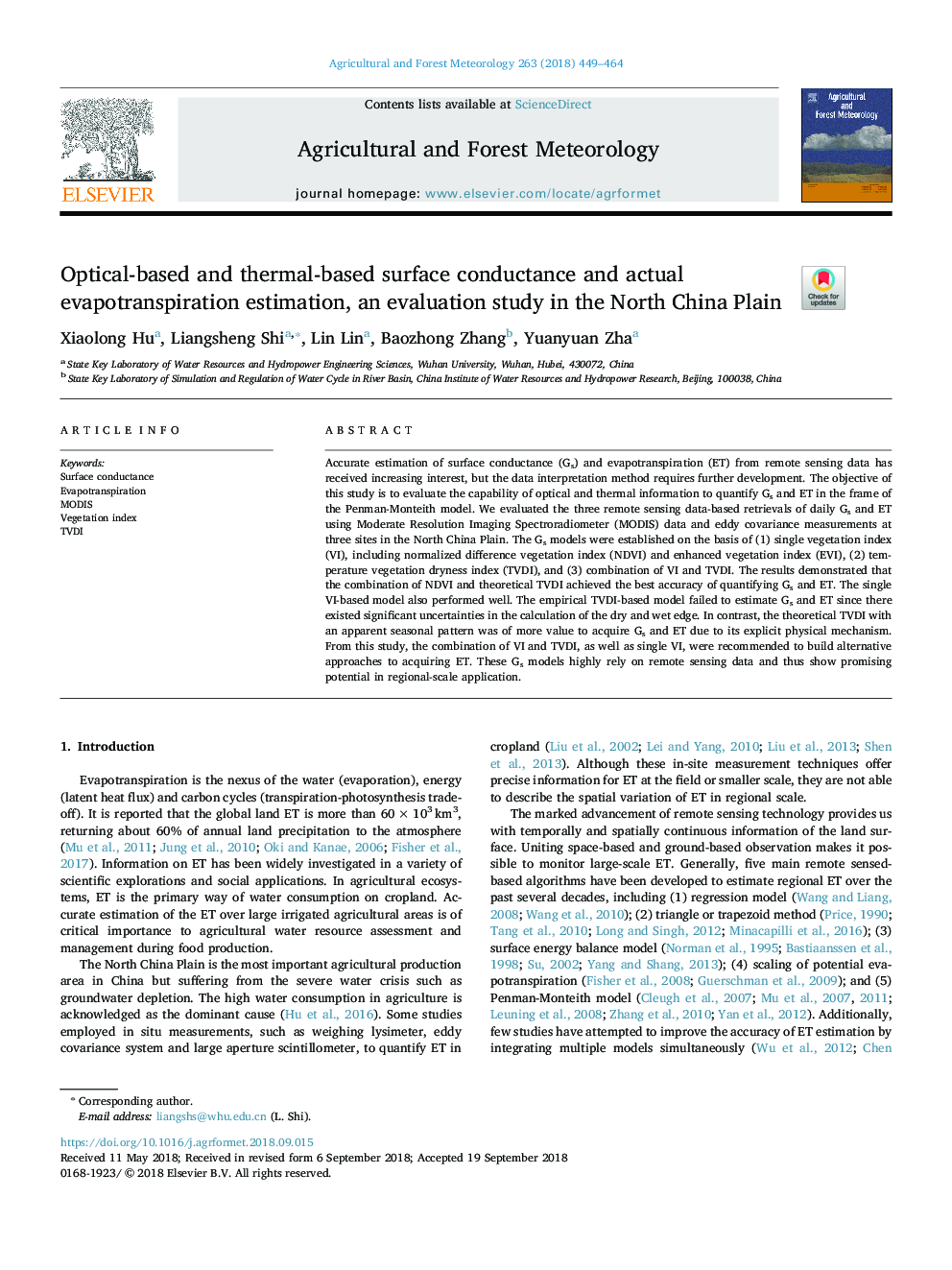| Article ID | Journal | Published Year | Pages | File Type |
|---|---|---|---|---|
| 10999992 | Agricultural and Forest Meteorology | 2018 | 16 Pages |
Abstract
Accurate estimation of surface conductance (Gs) and evapotranspiration (ET) from remote sensing data has received increasing interest, but the data interpretation method requires further development. The objective of this study is to evaluate the capability of optical and thermal information to quantify Gs and ET in the frame of the Penman-Monteith model. We evaluated the three remote sensing data-based retrievals of daily Gs and ET using Moderate Resolution Imaging Spectroradiometer (MODIS) data and eddy covariance measurements at three sites in the North China Plain. The Gs models were established on the basis of (1) single vegetation index (VI), including normalized difference vegetation index (NDVI) and enhanced vegetation index (EVI), (2) temperature vegetation dryness index (TVDI), and (3) combination of VI and TVDI. The results demonstrated that the combination of NDVI and theoretical TVDI achieved the best accuracy of quantifying Gs and ET. The single VI-based model also performed well. The empirical TVDI-based model failed to estimate Gs and ET since there existed significant uncertainties in the calculation of the dry and wet edge. In contrast, the theoretical TVDI with an apparent seasonal pattern was of more value to acquire Gs and ET due to its explicit physical mechanism. From this study, the combination of VI and TVDI, as well as single VI, were recommended to build alternative approaches to acquiring ET. These Gs models highly rely on remote sensing data and thus show promising potential in regional-scale application.
Related Topics
Physical Sciences and Engineering
Earth and Planetary Sciences
Atmospheric Science
Authors
Xiaolong Hu, Liangsheng Shi, Lin Lin, Baozhong Zhang, Yuanyuan Zha,
